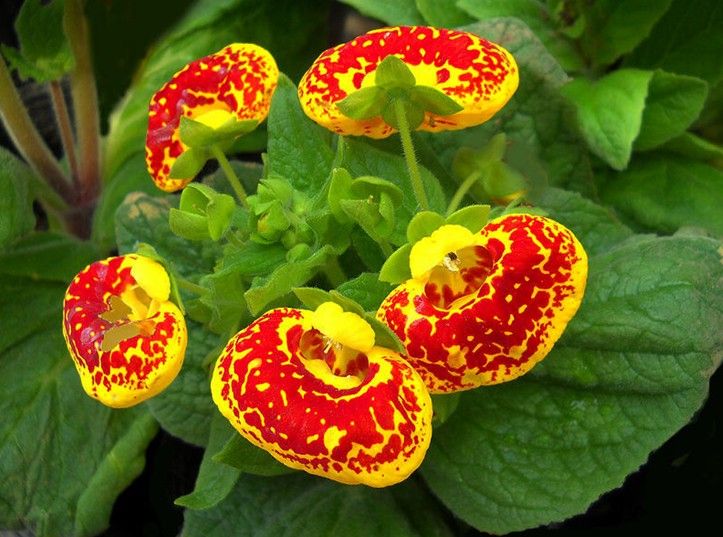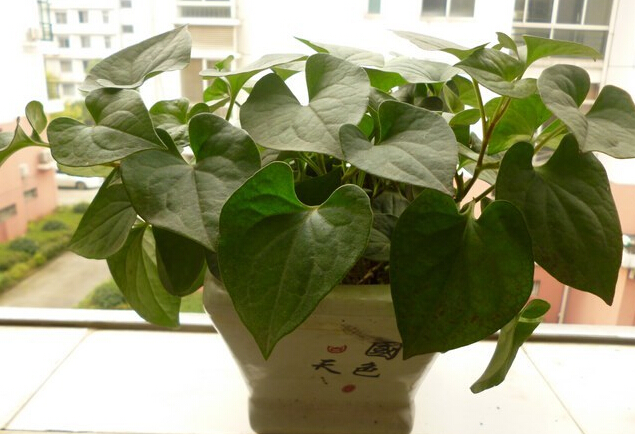Cultivation and management of water lilies
Beautiful water lilies can be planted not only in ponds but also in pots.
Pond planting should clean the pond water in early spring, apply base fertilizer and then add new pond mud and then irrigate. Irrigation should be filled many times. With the gradual addition of water to the growth of new leaves, the water depth can be kept at 70-80 cm during the flowering season. In winter, more water should be irrigated, and the water depth should be kept above 110 cm, so that the rhizome can survive the winter safely.
The pots selected by potted plants should have an inner diameter and depth of at least 40 cm × 60 cm. The Spring Equinox should turn the pots and change mud with ramets before and after each year, and add mature bean cake dregs or fertilizers rich in phosphorus and potassium, such as bone powder and hooves, at the bottom of the basin as base fertilizer. The lower part of the rhizome should be covered with at least 30 cm thick of Fei Wo River mud, covered with soil before passing the top bud, and then placed in the pool or tank to maintain a water depth of 40 cm 50 cm. The water layer in the high temperature season should be kept clean and the water should be changed for too long to prevent the growth of aquatic algae from affecting the ornamental. After blooming, you should get rid of the disability in time and topdressing as appropriate.

Water lilies, also known as meridian lilies and water celery flowers, are plants of Ranunculaceae. Perennial aquatic herbs; rhizome thickening. Leaf type 2: floating leaves are round or ovate, the base is curved, heart-shaped or arrow-shaped, often without water leaves; submerged leaves are thin and fragile. Flowers large, beautiful, floating or above water; sepals nearly free; petals white, blue, yellow or pink, in many whorls, sometimes inner whorls gradually turning into stamens; connective with or without appendages; carpels annular, Adnate and semi-submerged in fleshy cup-shaped receptacle, and partially healed in lower part, upper extending into style, stigma sunken into stigma disk, ovule anatropous, vertically in ovary inner wall.
The berries are spongy, irregularly dehiscent and mature below the surface of the water; the seeds are hard, wrapped in glue, with fleshy cup-shaped aril, small embryos, a small amount of endosperm and rich endosperm. From northeast to Yunnan, west to * *; Korea, Japan, India, Soviet Union, North America. Born in a pond. Rhizome edible or wine-making, and medicine, can treat children with slow wind; the whole grass can be used as green manure.
Water lilies like sunshine and are well ventilated, so tropical and hardy water lilies that bloom during the day close at night and bloom again in the morning. Ponds with shady trees on the bank can blossom, but grow weakly. The soil quality is not strict, the pH value is 6-8, all can grow normally, the optimum water depth is 25-30cm, and the deepest can not exceed 80cm. Like loam rich in organic matter. It germinates long leaves from March to April, blossoms one after another from May to August, and each flower blossoms for 2-5 days. Bear fruit after flowering. The stems and leaves withered from October to November. It sprouted again the following spring. It germinated from late March to early April, pregnant buds in late April or early May, bloomed from June to August, yellow leaves from October to November, and entered dormancy period after November. Born in ponds and lakes, it is often cultivated in the pools of some parks.
Cultivation and management of water lilies
Water lilies can be planted in pots or ponds. Pond plants should clean the pond water in early spring, apply base fertilizer, then add new pond mud and then irrigate. Irrigation should be filled many times. With the gradual addition of water to the growth of new leaves, the water depth can be kept at 70~80cm in the flowering season. In winter, more water should be irrigated, and the water depth should be kept above 110cm, which can make the rhizome survive the winter safely. The pot selected by the potted plant should have at least the inner diameter and depth of 40cm × 60cm. Every year, the Spring Equinox should combine the ramet to turn the basin and change the mud, and at the bottom of the basin, add mature bean cake dregs or bone powder, hooves and other fertilizers rich in phosphorus and potassium as base fertilizer, the lower part of the rhizome should be covered with at least 30cm thick Fei Wo River mud, cover the soil without passing the terminal bud, and then put it in the pool or tank to keep the water depth 40~50cm. The water layer in the high temperature season should be kept clean and the water should be changed for too long to prevent the growth of aquatic algae from affecting the ornamental. After blooming, you should get rid of the disability in time and topdressing as appropriate. Pot plants for indoor maintenance should be moved to the cold room or the bottom of deep water in winter. Give enough light during the growing period and do not leave it in the shade for a long time.
Now we will plant water lilies:
First, the flowerpot: try to choose the opening outward, the opening outward leaves will be better than the inward leaves, the wider the pot mouth, the larger the flowers (which has little to do with the size of the pot bottom). The depth of the flowerpot affects the flowering interval, and the deeper the interval is, the longer the interval is.
Second, soil: try to choose soil with high viscosity, such as clay and Yangmingshan soil.
Third, then put a little long-acting fertilizer or root fertilizer at the bottom of the pot (too much will rot the roots), and then put about 1 big 4-1 root in the flowerpot and press it, then bury the bulb bud point upward into the soil, the corm will be buried deep, the flowering interval will be longer but larger, and the shallow interval will be shorter and smaller. After planting, move to a place with plenty of light, fill up the water, and wait for the long leaves to blossom (too many leaves can be trimmed).
4. if you want to plant more than two bulbs together, different from other flowers, two bulbs should be planted next to each other, because if you plant separately, when the stronger leaf covers the weaker bud, the weaker one will be killed. In addition, if you want to plant together, it is better to be of the same species or the same color, because the dark color system (such as purple, blue) will be stronger than the light color system (white, yellow) Remember!
Fifth, after flowering, the flowers can be cut off and inserted (except the lotus). The life span of the flowers is about 3-6 days. On the first day, the flowers will be more straight, and then they will bend more and more until they bend into the water. If the flowers are cut down and inserted, the flowering interval will be shortened, and the interval will be longer if you let it go.
Sixth, add fertilizer: about every one and a half to two and a half months, add long-acting fertilizer or root fertilizer about 3-5 cm away from the bulb, but do not add it after the end of September, because the water lilies will also enter the dormant period and fatten up every one and a half months. Instead, it will cause rotting roots.
7. After entering autumn and winter, water lilies will also enter the dormancy period with the drop of temperature, and it is best not to touch it at this time. Only when there is little water, the dormancy period of varieties with spots on their leaves will be longer than those without spots, and the light color system will be longer than the dark color one.
Transplant and split buds: it can be carried out every year after the Qingming Festival to before the Mid-Autumn Festival. When dividing buds, you should be careful not to hurt the bud point, and the size of the bulb is not too important. It is suggested that there should not be too many bud cores in a pot, and the leaves will become smaller and will not blossom. Therefore, it is necessary to divide buds once or twice a year on average.
9. Some varieties will carry out another kind of asexual reproduction in the center of the leaf. if you find that there is a long bud in the center of the leaf, ignore it and let it grow until the leaf begins to turn yellow, cut off the petiole with the bud core and put it in a water basin or flowerpot. The same one is placed in a place with plenty of light, about two weeks, when the bud point grows and grows roots, it can be planted according to the normal plant, and it will blossom in the same year.
If you want to know more about it, you can continue to follow the No.1 Home Network.
- Prev

Culture methods and matters needing attention of lotus flower
Technical points Pu Baobao flower is an herb plant of Scrophulariaceae, with yellow, purple, red, milky white, orange-red, dark brown and so on. The flowers are decorated with colored spots and markings, and are often used for interior decoration. Flowering from December to February of the following year, and flowering from March to April in greenhouse
- Next

Culture methods and matters needing attention of Houttuynia cordata Thunb
Seed germination rate is not high, germination is suitable for 17-25 degrees Celsius temperature change, germination rate is about 20%. It can be propagated by ramet, cuttage and rhizome. Ramet propagation is from late March to April, and the mother plant can be dug up and transplanted on the seedbed of sandy soil or directly transplanted. Cuttings can be propagated in spring and summer.
Related
- Fuxing push coffee new agricultural production and marketing class: lack of small-scale processing plants
- Jujube rice field leisure farm deep ploughing Yilan for five years to create a space for organic food and play
- Nongyu Farm-A trial of organic papaya for brave women with advanced technology
- Four points for attention in the prevention and control of diseases and insect pests of edible fungi
- How to add nutrient solution to Edible Fungi
- Is there any good way to control edible fungus mites?
- Open Inoculation Technology of Edible Fungi
- Is there any clever way to use fertilizer for edible fungus in winter?
- What agents are used to kill the pathogens of edible fungi in the mushroom shed?
- Rapid drying of Edible Fungi

